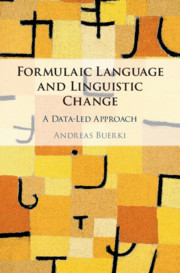Book contents
- Frontmatter
- Dedication
- Contents
- List of Figures
- List of Tables
- Preface
- Abbreviations
- Introduction
- 1 Formulaic Language
- 2 Cultural Context and Diachrony
- 3 The Data, the Community and a Data-Led Identification of MWEs
- 4 MWEs in Written German
- 5 Culture As Motivator of Change
- 6 Cultural Motivation in Context
- Conclusions
- Appendix A Filter Entries
- Appendix B Rater Guidelines on Semantic Unity
- References
- Index
4 - MWEs in Written German
Published online by Cambridge University Press: 06 April 2020
- Frontmatter
- Dedication
- Contents
- List of Figures
- List of Tables
- Preface
- Abbreviations
- Introduction
- 1 Formulaic Language
- 2 Cultural Context and Diachrony
- 3 The Data, the Community and a Data-Led Identification of MWEs
- 4 MWEs in Written German
- 5 Culture As Motivator of Change
- 6 Cultural Motivation in Context
- Conclusions
- Appendix A Filter Entries
- Appendix B Rater Guidelines on Semantic Unity
- References
- Index
Summary
The fourth chapter offers an overview and discussion of empirical examples of formulaic language in the data. This is important to draw out the characteristics of the linguistic structures that constitute the material analysed in remaining chapters. For example, it is demonstrated that conversational formulae that have in the past been studied in relation to cultural frames in fact only account for a marginal percentage of MWEs in the data. It is also established that over half of all MWEs in the data contain at least one variable position and as such the material investigated is markedly different from lexis.
- Type
- Chapter
- Information
- Formulaic Language and Linguistic ChangeA Data-Led Approach, pp. 101 - 123Publisher: Cambridge University PressPrint publication year: 2020

